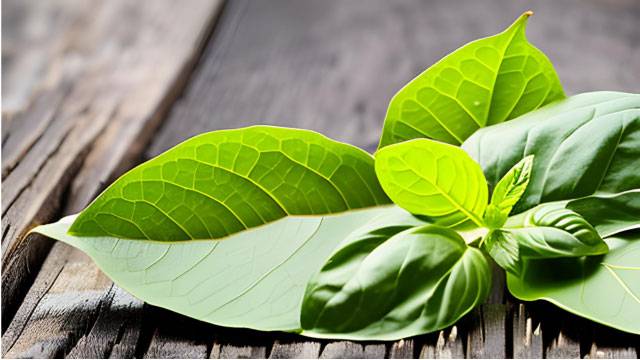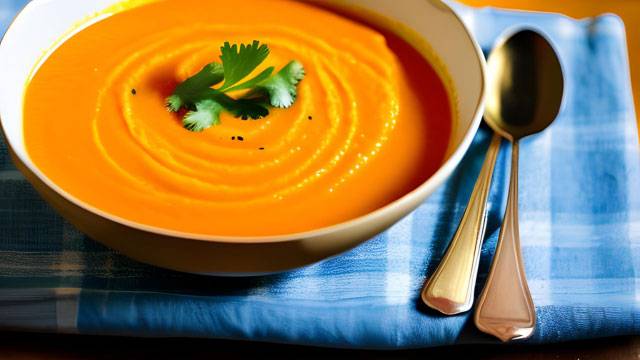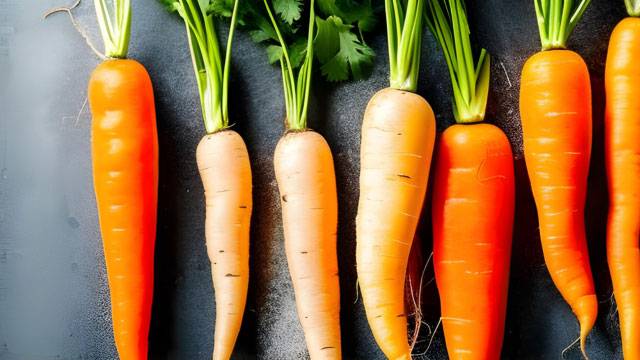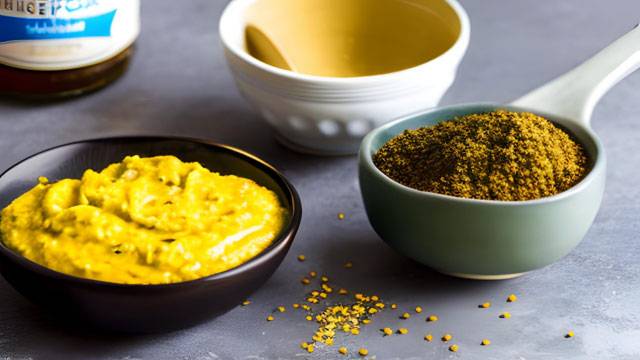
When cooking, it’s not uncommon to come across recipes that call for mustard. However, if you find yourself without it in your pantry, fret not! There are several excellent mustard substitutes that can add a similar zing to your dishes.
Whether you’re making marinades, dressings, or adding a tangy kick to your favorite meals, these alternatives are sure to impress.
What Is A Substitute For Mustard?
- Mustard Seeds: If you have mustard seeds on hand, grind them into a powder and mix with water or vinegar to create a homemade mustard substitute.
- Horseradish: Horseradish offers a pungent and zesty flavor, making it an ideal replacement for mustard in many recipes.
- Wasabi: Known for its fiery kick, wasabi can be used as a mustard substitute, especially in Asian-inspired dishes.
- Dijon Mustard: While mustard itself may be missing from your kitchen, Dijon mustard can often be a suitable stand-in, providing a similar tanginess.
- Mayonnaise with Lemon Juice: Mixing mayonnaise with a splash of lemon juice can create a creamy alternative with a subtle tang.
- Greek Yogurt: For a healthier option, Greek yogurt combined with a little vinegar or lemon juice can work wonders.
- Honey Mustard Sauce: If you’re craving the sweetness of mustard, try making a honey mustard sauce with honey, vinegar, and spices.
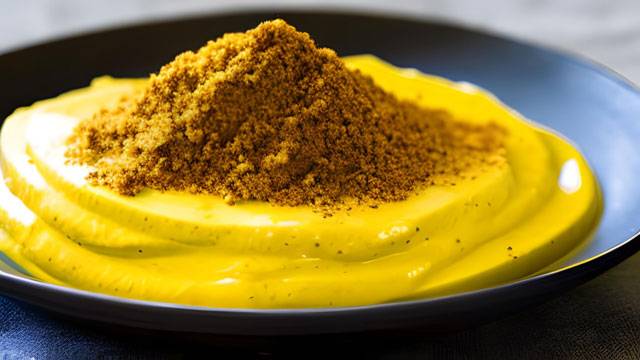
See also – Whole Grain Mustard Substitute
FAQs
What is mustard?
Mustard is a condiment made from ground mustard seeds, vinegar, water, and various spices. It comes in different varieties, such as yellow mustard and regular mustard, each with its distinct flavor profile and ingredients.
What can I use instead of mustard in beef stroganoff?
For beef stroganoff, you can use alternatives like horseradish, Worcestershire sauce, or a mix of Dijon mustard and mayonnaise to achieve a similar tangy and savory flavor.
What is a substitute for 1 tablespoon of dry mustard?
You can replace 1 tablespoon of dry mustard with 1 tablespoon of mustard paste or 1 teaspoon of mustard powder mixed with 1 tablespoon of water or vinegar.
What is the difference between mustard and Dijon?
Dijon mustard is a specific type of mustard that originated in Dijon, France. It is made with brown or black mustard seeds, white wine or wine vinegar, water, and salt.
Regular mustard, on the other hand, can be made with various mustard seeds and ingredients and may have a milder taste compared to Dijon.
What is a substitute for mustard in a marinade?
When substituting mustard in a marinade, you can use alternatives like soy sauce, balsamic vinegar, or a combination of olive oil, lemon juice, and herbs for added flavor.
What is a healthy alternative to mustard?
Greek yogurt mixed with lemon juice or apple cider vinegar can be a healthy alternative to mustard, providing a creamy and tangy element to your dishes.
What can I use instead of mustard in cream sauce?
In cream sauces, you can replace mustard with white wine, lemon juice, or a touch of apple cider vinegar to achieve a similar acidity and brightness.
What does mustard do to meat when cooking?
Mustard can tenderize and add flavor to meat when used as a marinade. It also creates a crust or coating on the meat, enhancing its taste during cooking.
What herb tastes like mustard?
The herb known as “mustard greens” has a flavor reminiscent of mustard, providing a peppery and slightly bitter taste.
What seasonings are in mustard?
Mustard typically contains ground mustard seeds, vinegar, water, and various spices, which may include turmeric, paprika, garlic, and onion powder.
What is the spice in mustard?
The main spice in mustard is derived from ground mustard seeds, which give mustard its characteristic tangy and sharp taste.
What is the difference between yellow mustard and regular mustard?
Yellow mustard and regular mustard belong to the same family, but they diverge in their composition and taste.
Yellow mustard derives its name from the yellow mustard seed, which forms its base along with vinegar, water, and a medley of spices, including turmeric, which imparts its distinct sunny hue. Predominantly prevalent in the United States, yellow mustard boasts a mild, approachable flavor.
On the other hand, regular mustard, alternatively labeled whole-grain mustard or coarse-ground mustard, incorporates brown or black mustard seeds, alongside vinegar, water, and various spices. Its taste profile packs a more potent, pungent punch compared to yellow mustard, making it a popular condiment choice for meats and sandwiches.
In summary, the fundamental contrast between yellow mustard and regular mustard lies in their mustard seed type, culminating in divergent flavors and textures.
How can I substitute ground mustard?
To substitute ground mustard, you can use mustard seeds, wasabi powder, horseradish, or a mix of dry mustard with water or vinegar.
Why do recipes call for dry mustard?
Recipes often call for dry mustard because it is more convenient and easier to incorporate than mustard seeds. Dry mustard also disperses evenly in recipes, ensuring a consistent flavor.
Can you substitute turmeric for dry mustard?
While turmeric has a slightly different flavor profile, it can be used as a substitute for dry mustard in some recipes, providing a similar yellow color and mild bitterness.
Can I use mustard powder instead of Dijon?
Mustard powder and Dijon have different consistencies and flavor intensities. While you can use mustard powder as a replacement, the taste and texture may differ from the original Dijon mustard.
What is the key ingredient in mustard?

The key ingredient in mustard is mustard seeds, which are ground to create the base for various mustard varieties.
Can mustard be a hidden ingredient?
Yes, mustard can be used as a hidden ingredient in certain recipes to enhance flavors without being easily identifiable as mustard.
Why is mustard healthier than mayo?
Mustard is generally considered healthier than mayonnaise because it contains fewer calories and fat while still providing a flavorful punch. Mustard is also lower in cholesterol and often contains beneficial compounds found in mustard seeds.
What is the purpose of mustard sauce?
Mustard sauce serves as a flavorful condiment that complements and enhances the taste of various dishes, from sandwiches and hot dogs to meats and marinades.
What can I use instead of mustard on pork shoulder?
As an alternative to mustard on pork shoulder, you can use olive oil, barbecue sauce, or a dry rub with herbs and spices to create a flavorful coating.
For other protein options, click on – High Protein Dinners
How do you get rid of mustard taste in a recipe?
To reduce the overpowering mustard taste in a dish, you can balance it out with sweetness, such as honey or brown sugar, or dilute it with other liquids or neutral ingredients.
Why do people use mustard before seasoning?
Using mustard before seasoning helps the seasoning adhere better to the food’s surface, ensuring a more even and enhanced flavor distribution during cooking.
Why do people put mustard on chicken before seasoning?
Applying mustard to chicken before seasoning serves as a marinade, tenderizing the meat and infusing it with a tangy flavor that complements the seasoning.
For ideas click on – High Protein Chicken Options
Why put mustard on chicken before frying?
Coating chicken with mustard before frying creates a crispy and flavorful crust while also ensuring the meat remains moist and tender during cooking.
What vegetable tastes like mustard?
Mustard greens, as mentioned earlier, taste like mustard and offer a peppery and slightly bitter flavor.
What greens taste like mustard?
Mustard greens themselves have a distinct mustard flavor. Arugula and watercress are also known for their peppery and tangy taste, which may be reminiscent of mustard.
What leaves taste like mustard?
Mustard greens are the leaves that taste like mustard, providing a pungent and spicy flavor.
How much paprika is in mustard?
The amount of paprika in mustard can vary depending on the mustard’s recipe and variety. Some mustards may contain paprika as part of their spice blend, while others may not include it at all.
Is turmeric related to mustard?
Yes, turmeric is a close relative of mustard, and both belong to the same botanical family, Brassicaceae.
What spice tastes like mustard?
Horseradish and wasabi are two spices that share a similar pungent and spicy flavor profile with mustard.
Does mustard have paprika?
Not all mustards contain paprika, but some varieties may include it as one of the spices in their blend.
Does mustard seasoning taste like mustard?
Yes, mustard seasoning, like mustard itself, has a tangy, sharp, and slightly bitter taste.
What can I mix to make mustard?
To make mustard, you can mix ground mustard seeds, vinegar, water, and a combination of various spices like turmeric, paprika, garlic powder, and more, depending on your preferred flavor.
How many ingredients are in mustard?
The number of ingredients in mustard can vary depending on the type and brand, but traditional mustard typically contains a handful of components like mustard seeds, vinegar, water, and a blend of spices.
Why do people eat a spoonful of mustard?
Some people consume a spoonful of mustard as a home remedy to alleviate muscle cramps. The reason behind this is likely due to the presence of acetic acid in mustard, which is believed to help relieve cramps.
Conclusion
When the recipe calls for mustard but your pantry disagrees, fear not! Embrace the versatility of these mustard substitutes to elevate the flavors in your cooking.
From the spiciness of horseradish to the creaminess of Greek yogurt, there’s a substitute to suit every dish. So, experiment with these alternatives, and you’ll be amazed by the delightful results they bring to your culinary creations.
Remember, the key to successful substitution lies in finding the best match for the particular recipe you’re working on. Feel free to explore different combinations and ratios until you achieve the desired flavor profile.
With these substitutes at your disposal, you can confidently tackle any recipe that calls for mustard, even when it’s not in your pantry.

